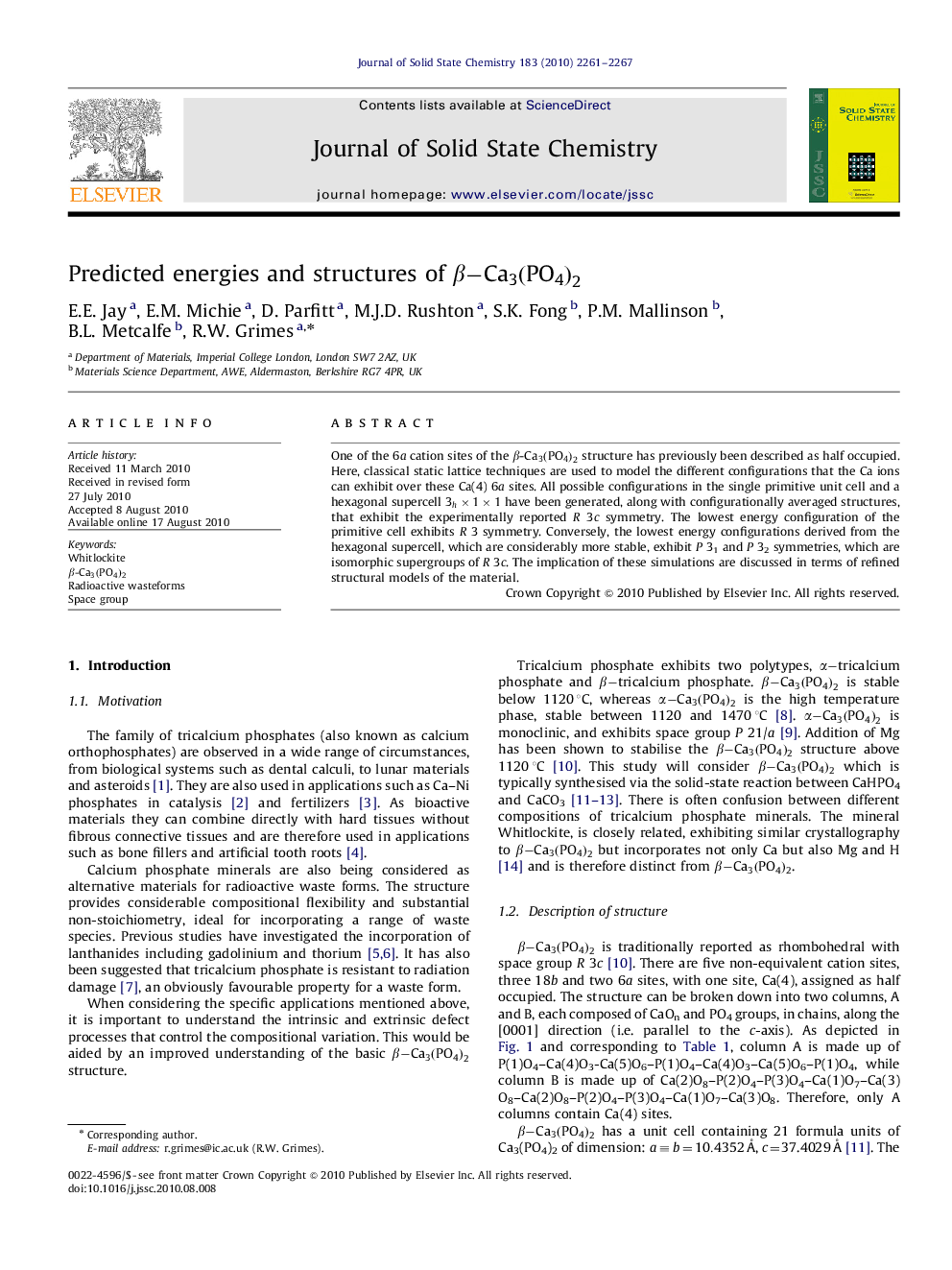| Article ID | Journal | Published Year | Pages | File Type |
|---|---|---|---|---|
| 1332330 | Journal of Solid State Chemistry | 2010 | 7 Pages |
One of the 6a cation sites of the β‐Ca3(PO4)2β‐Ca3(PO4)2 structure has previously been described as half occupied. Here, classical static lattice techniques are used to model the different configurations that the Ca ions can exhibit over these Ca(4) 6a sites. All possible configurations in the single primitive unit cell and a hexagonal supercell 3h×1×13h×1×1 have been generated, along with configurationally averaged structures, that exhibit the experimentally reported R 3c symmetry. The lowest energy configuration of the primitive cell exhibits R 3 symmetry. Conversely, the lowest energy configurations derived from the hexagonal supercell, which are considerably more stable, exhibit P 31 and P 32 symmetries, which are isomorphic supergroups of R 3c. The implication of these simulations are discussed in terms of refined structural models of the material.
Graphical AbstractOne of the 6a cation sites of the β‐Ca3(PO4)2β‐Ca3(PO4)2 structure has previously been described as half occupied. Here, classical static lattice techniques are used to model the different configurations that the Ca ions can exhibit over these Ca(4) 6a sites. All possible configurations in the single primitive unit cell and a hexagonal supercell (3h×1×1) have been generated, along with configurationally averaged structures, that exhibits experimentally reported R 3c symmetry. The lowest energy configuration of the primitive cell exhibits R 3 symmetry. Conversely, the lowest energy configurations derived from the hexagonal supercell cell, which are considerably more stable, exhibit P 31 and P 32 symmetries, which are isomorphic supergroups of R 3c. The implication of these simulations are discussed in terms of refined structural models of the material.Figure optionsDownload full-size imageDownload as PowerPoint slide
